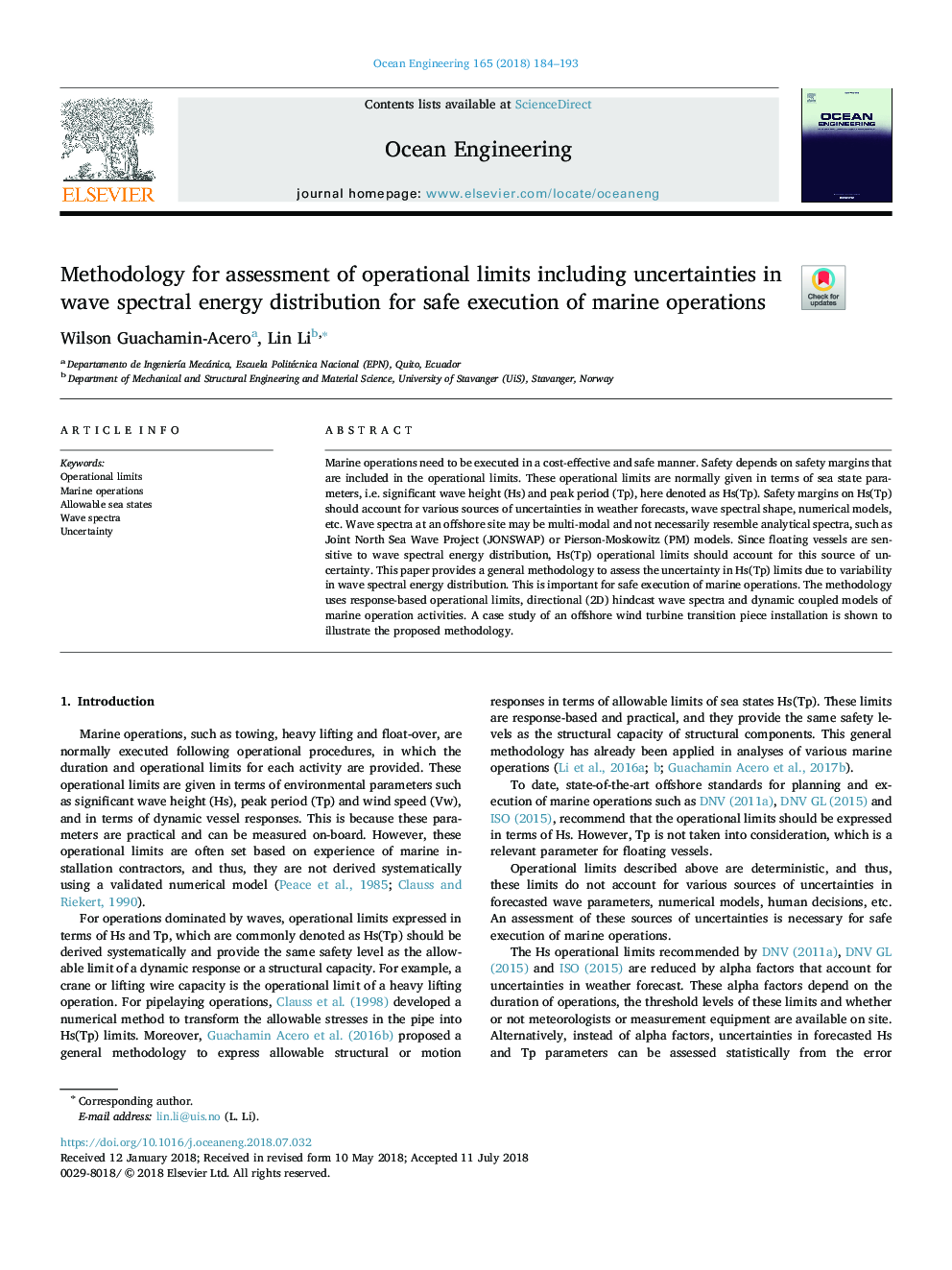| Article ID | Journal | Published Year | Pages | File Type |
|---|---|---|---|---|
| 8061771 | Ocean Engineering | 2018 | 10 Pages |
Abstract
Marine operations need to be executed in a cost-effective and safe manner. Safety depends on safety margins that are included in the operational limits. These operational limits are normally given in terms of sea state parameters, i.e. significant wave height (Hs) and peak period (Tp), here denoted as Hs(Tp). Safety margins on Hs(Tp) should account for various sources of uncertainties in weather forecasts, wave spectral shape, numerical models, etc. Wave spectra at an offshore site may be multi-modal and not necessarily resemble analytical spectra, such as Joint North Sea Wave Project (JONSWAP) or Pierson-Moskowitz (PM) models. Since floating vessels are sensitive to wave spectral energy distribution, Hs(Tp) operational limits should account for this source of uncertainty. This paper provides a general methodology to assess the uncertainty in Hs(Tp) limits due to variability in wave spectral energy distribution. This is important for safe execution of marine operations. The methodology uses response-based operational limits, directional (2D) hindcast wave spectra and dynamic coupled models of marine operation activities. A case study of an offshore wind turbine transition piece installation is shown to illustrate the proposed methodology.
Related Topics
Physical Sciences and Engineering
Engineering
Ocean Engineering
Authors
Wilson Guachamin-Acero, Lin Li,
